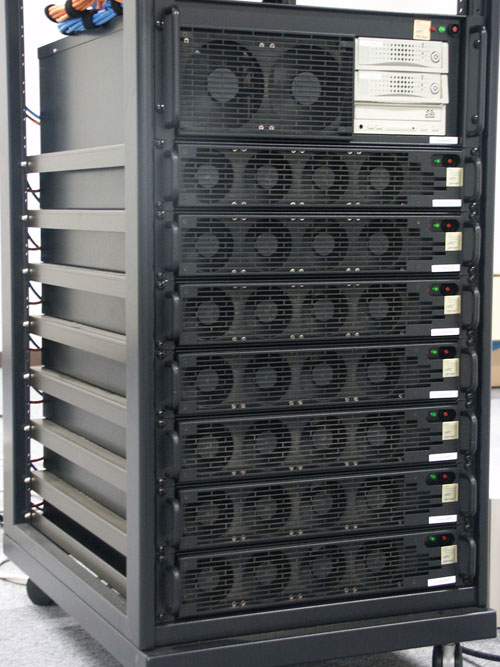

|
RESEARCH CENTER FOR INTEGRATIVE AND COMPUTATIONAL BIOLOGY |
| Head: | TAKADA, Shinji |
| Associate Professor: | MOCHIZUKI, Atsushi |
| Supporting Staff: | UMEBAYASHI, Hiromi |
|
The aim of the research center for integrative and computational biology is (1) investigating fundamental principles of various biological phenomena based on the method of integration of computational science and biology; (2) establishing new methodology for the integrative biology; and (3) providing the new technology and knowledge for the researchers. Our final goal is to establish new bioscience including methods originally of different fields; informatics, mathematics, and biology.
I. Research activityThe research center for integrative and computational biology was founded in 2001 under the situation of rapid progress in modern biology. The success in world wide genome projects has provided a huge amount of information of genes. Following this, it is expected to develop new medicine for intractable diseases or to exploit new cultivated plants resistant to noxious insects, and so on. In addition, it is the subject of present biology to solve higher-order phenomena that are constructed from complex interaction between many genes. To answer these requests, it is essential to decipher the enigma of huge amount of gene information, and to derive the essence for the biological behavior of cells or organisms. Mathematical and computational sciences have strong property for this condition. Computational methods make it possible to process much larger data than human ability. Hypothetical experiments based on mathematical or computational models make it possible to consider conditions which are impossible in real experiments including the evolution of past organisms. We are continuing to research higher-order phenomena in biology by using mathematical or computational methods, and to develop new methodology for studying such complex phenomena. |
 |
|
Figure1. A laboratory room for computational studies. |
|
For example, the integrative methods are especially important to understand pattern formation in development. Morphological difference between species is an important research focus of the current developmental biology. What is the mechanism responsible for the difference of morphogenesis between species? Theoretical studies would be useful in identifying candidates of cell or gene interaction that are likely to be responsible for the systems in real organisms. The method gives us an integrative understanding for behavior of complex systems in biology including gene regulatory networks.
II. Collaboration activityInteraction between researchers is essential to make the best use of mathematical and computational methods for experimental biology. The theoretical methods should provide testable predictions, and the experimental biologists should test the predictions and return the results to theoretician for the next predictions.By repeating these predictions and tests, the integrative methods should be developed. The research center for integrative and computational biology has continued to enhance interaction between theoretical biologists and experimental biologists. The center provides equipments for computation and experiments. We have some cluster machines and enough number of Unix based machines for our member. The member can also use computational equipments in Research Center for Computational Science in Okazaki. The center also provides experimental equips for the collaborations with experimental biologists. |
 |
|
Figure 2. one of equipment, a cluster machine. |
|
We have held research conferences repeatedly.In 2004, we held two days symposium in March 8-9, entitled as "Mathematical and Computational Approaches to Biology", where dozens of researchers studying mathematical, computational, or experimental biology participated. The history of mathematical or computational methods for biology is still short. The center has continued to bring up and to encourage young researchers who can use these methods for biological phenomena. |
 |